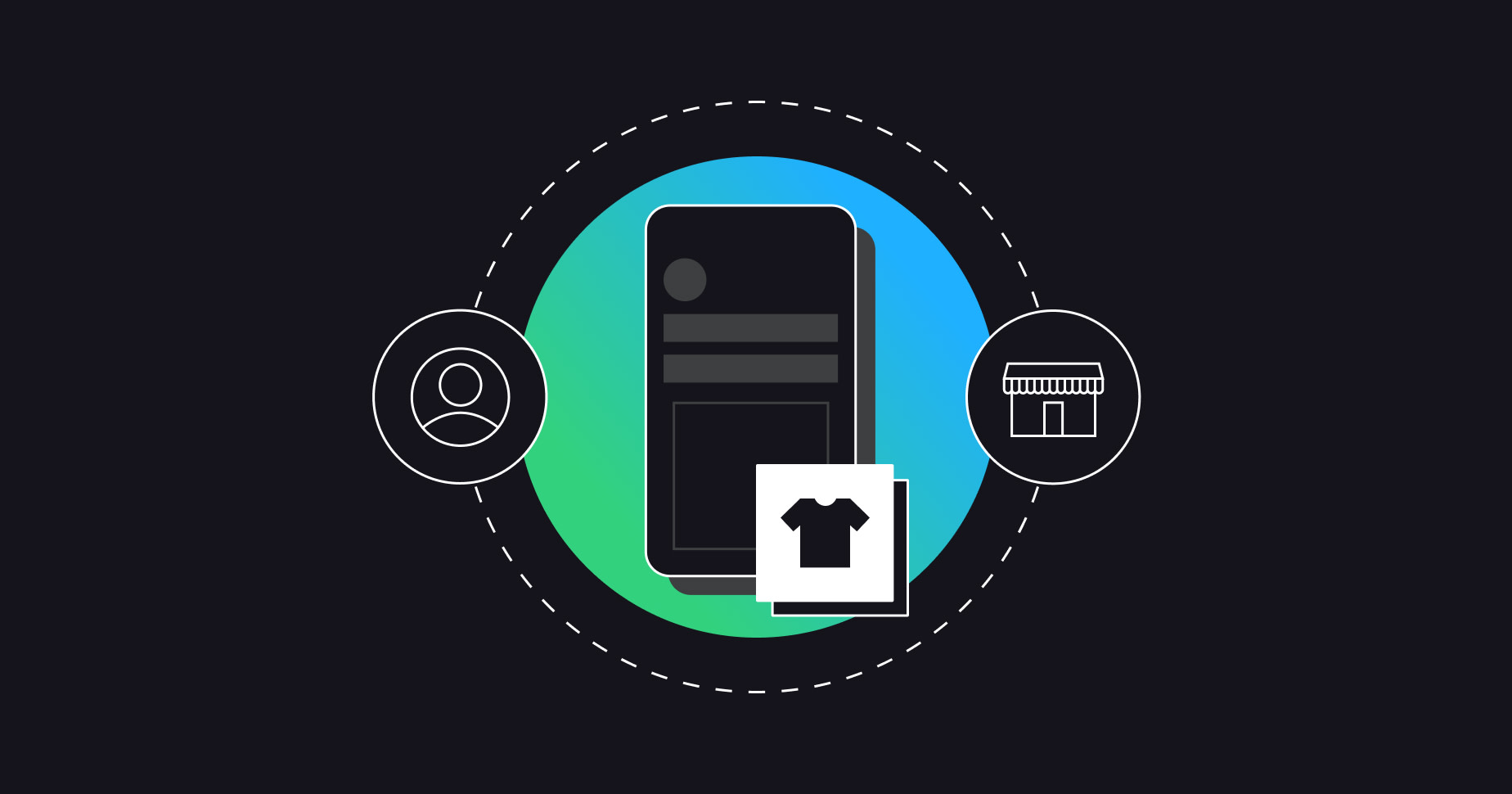You’ve got a successfuldirect to consumer (DTC) brandwith an army of customers lapping up the innovative experiences you’re delivering. On the business to business (B2B) side of your ecommerce business, however, things are… stagnant.
Studies show that90% of B2B buyerswant DTC-style experiences from the suppliers they buy from, yet more than half are frustrated when brands fall short on these expectations.
This push can partially be attributed to the changing demographics of B2B buyers.Forrester reportsmillennials are involved in 73% ofB2B buying decisions. Millennials grew up alongside technology and expect self-serve, personalized, and frictionless customer journeys—regardless of whether they’re buying for themselves or their company. The outcome for brands providing this B2B experience? Acquiring new customers and lifetime value (LTV), the main drivers of growth.
DTC-ifying your B2B storefront allows you to deliver on these promises, while providing business buyers with seamless experiences that convince them to continue buying. This guide shares how to do it.
We’ll cover:
- What does it mean to DTC-ify B2B ecommerce?
- Why does B2B need the DTC experience?
- What features or functionality support this change?
What does it mean to “DTC-ify” B2B ecommerce?
B2B ecommerceis becoming consumerized. A whopping 90% of B2B buyers want to be marketed to from the suppliers they buy from, largely due to the fact that millennials have purchasing power within organizations.
“DTC-ifying B2B experiences means bridging the gap between the modern online shopping experience and traditional B2B purchasing methods. That could mean providing more personalization options, offering better discounts, or faster shipping options. It's about understanding business buyers' needs and delivering on them in a way that's appropriate for their unique situation.” —David Zhang, CEO of Kate Backdrop
To DTC-ify B2B ecommerce simply means to provide a seamless and personalized customer ecommerce experience. It meets your customers' need to have access to all of their most important data (products, pricing, orders, and account information) in one place, while still allowing them to connect and build a relationship with your brand.
Dated methods of B2B sales, through phone, email, or sales rep interactions, can often lead to a higher risk of losing orders in both the short and long term. Physical orders can get lost. Valuable team members, with all of their critical customer knowledge, may leave in favor of competitors. The old ways of selling rely on others to enact the transaction and are typically not scalable when you want to reach a national or global audience. Ecommerce, on the other hand, is driven by the needs of your buyers and is available to all of your customers, 24/7.
And the downsides of not providing this experience are clear.Almost 25%of B2B buyers have switched suppliers after just one negative online experience. But by utilizingDTC trendsin your B2B operation, you’ll get closer to your customers with personalized experiences that drive easy conversion at scale.
Read more:The B2B Ecommerce Trends and Statistics to Follow in 2023
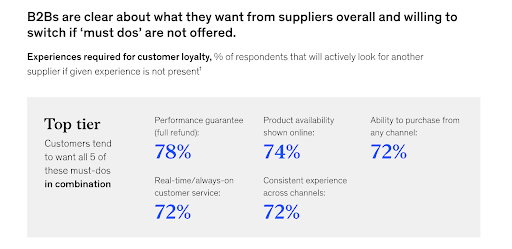
McKinseyfound customers will actively look for another supplier if their current experience doesn’t include DTC-style experiences like full refunds, real-timecustomer service, online product availability, and omnichannel experiences.
Why does B2B need the DTC experience?
DTC-ifying the B2B customer experience might seem like an unnecessary hassle. After all, the B2B ecommerce industry has changed dramatically over the last decade. Does it really need any more innovation?
The short answer is yes. Let’s dive deeper into why consumerizing B2B sales is a competitive advantage.
Increase conversion
或许最重要的是,你会赢得业务bring in new B2B customers with an exceptional buying experience—one that lends DTC-style functionality and provides shoppers with the online experiences they’re accustomed to.
A personalized buying experience allows you to better connect to your existing buyers and encourage them to place repeat orders.Studies showthat 60% of buyers think their supplier’s ecommerce experience is very important to their relationship with the supplier. Another 67% say they’ve switched vendors to offer a more “consumer-like” experience.
In even better news: delightful buying experiences result in higher average order values and encourage repeat ordering among your customers. Retaining your existing customers and driving growth from their orders reduces the pressure of finding new customers as you scale and meet aggressive growth targets.
“By creating an experience that mirrors the convenience and personalization of DTC retailers, businesses can give their buyers a better shopping experience. This can lead to increased loyalty, repeat purchases, and higher sales.” —Aaron Jerez, founder and CEO of Home Bar Select
Save time for you and your buyers
Great ecommerce sites allow customers to do more in less time. Customers making both B2B and DTC transactions will stop working with merchants who require a heavy time investment, in favor of competitors that offer a seamless buying process with less friction.
Streamlined, efficient ecommerce platforms are a win for merchants too. Saving time and resources internally drives higher profit margins and additional revenue that you can pocket.
By DTC-ifying the buying experience for wholesale customers, you’ll spend more time on strategic initiatives and less on back office tasks. Plus, you can limit human error by automating more of your internal processes.
Build brand loyalty and awareness
DTC brands have been taking advantage ofbeautiful, creative websitesand design for years.
The effect is always greater brand loyalty and awareness—likeLife Interiors, a home furnishing brand thatmoved to Shopify Plus. Its entire digital journey was overhauled alongside a website redesign. The result? A 23% uplift in conversions, a 61% increase in revenue, and a 60% increase in average order value.
In B2B, the same concept applies. Excellent branding will help you differentiate your business from other competitors on the market with minimal lift.
Stand out from your competition
An online presence is no longer adequate to compete. A recentMcKinseyreport concluded, “It’s not enough for B2B companies to meet this moment; they need to prepare for the next one: delivering consistent, exceptional experiences across the omnichannel ecosystem.”
This is supported byStatistadata, which shows B2B buyers want various DTC-style functions from the B2B companies they buy from online. The ability to order customized products, browse availability, and track orders ranked high on their list of priorities—yetmore than halfare frustrated with the online experiences currently on offer.
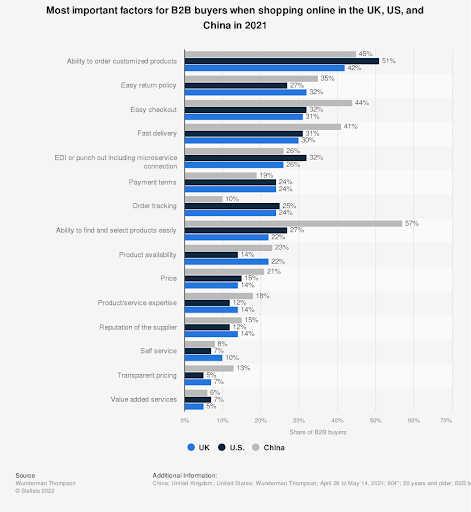
What features or functionality supports this change?
Customization and personalization
With the proliferation of ecommerce in everyday life, buyer expectations of online experiences are rising. Around seven in 10 consumers are conditioned tolook for personalized experiences, and companies that excel at personalizationdrive 40% more revenuethan their average counterparts .
Apply the same concept to your B2B ecommerce strategy for similar return on investment (ROI). Be proactive, rather than reactive, and provide buyers with personalized experiences at every touchpoint. That includes:
- Customized product catalogs.Curating the products and prices your customers see online is key to ecommerce success in B2B, as buyers typically spend limited time on your site and work with many suppliers. Features like customer-specific product publishing, quantity rules for product purchasing, and customized pricing and payment terms allow you to personalize the buying experience and better engage your customers.
- Branding customizations and designincluding a consistent experience across all channels so you can build greater brand awareness and loyalty. Lean onShopify Plus partnersthat specialize in your industry and offer assistance with B2B branding, web design, mobile apps, and more. Or, try out of the box features in the Shopify admin, like thecheckout editor, to make sure branding is consistent across your entire ecommerce site and self-serve account hub.
- Multi-currency and multi-language options.Modern B2Becommerce is global—you’re not restricted to buyers within your own location. Grow and scale your business by expanding internationally with a platform that can support currency and language localization for all of your customers. Within Shopify, B2B merchants can use a combination of Markets and Catalogs to easily adjust the experience and product selection for international buyers.
- Reviews and product recommendations.Customers want to see themselves in the campaigns they’re viewing, and hear from customers similar to themselves who vouch for the products you’re selling. Connecting to your customers through curated product recommendations and peer reviews inspires trust in your brand and allows you to build deeper relationships with your customers.
Some41% of B2B buyersthink the absence of an ecommerce website causes payment friction. UseShopify Plus’ B2B ecommerce platformto have this level of control over both your DTC and B2B storefronts. Get the flexibility to customize your B2B site so that you can scale conversion, without forcing your sales team to bear the load.
“One of the biggest priorities for us was to make sure both parts of the business—DTC and B2B—felt unified. Same brand, same website, same quality, and most importantly same service. The biggest mistake I think companies make is trying to separate the two. The more a company can integrate both types of offerings, the better off they will be in the long term!” —Colin Barceloux, CEO of Lively Root
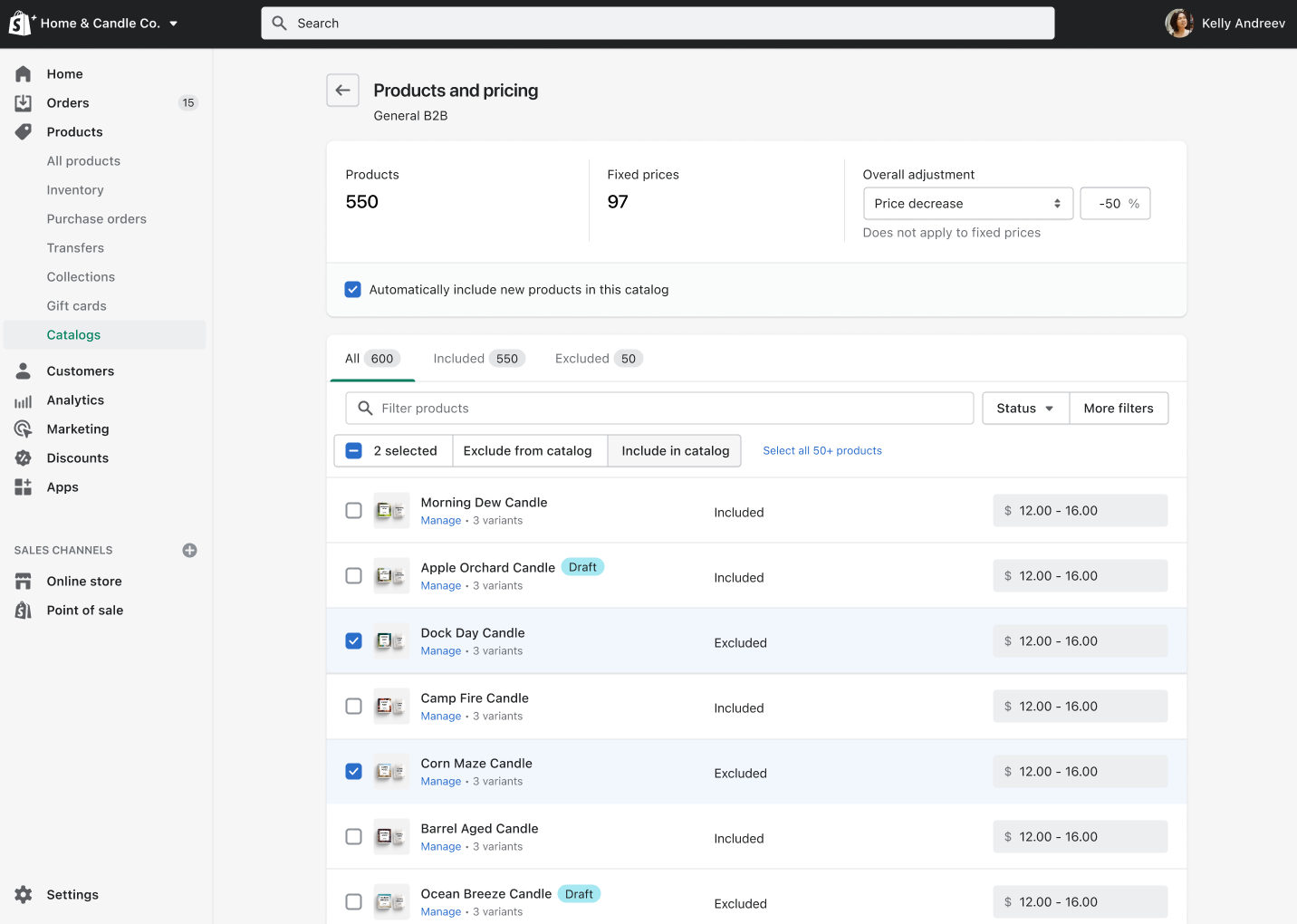
Self-serve and automation
Save time for you and your buyers while solving a major sales objection in B2B purchase decisions: ease of purchase. The easier it is to buy from you, the less time a customer has to second-guess their purchase and the more likely they’ll be to purchase from you again in the future.
The best ecommerce platforms will allow a customer to place an order anytime, and manage their own account with access to their specific pricing, products, payment terms, and more. Your customers want this self-serve option without having to contact sales or support.
With Shopify Plus’B2B platform, merchants benefit from:
- Vaulted credit cards.所有ow buyers to vault their credit card at checkout or within their self-serve account hub, and charge their card on file as payments become due. You get paid on time, every time—no chasing required.
- Payment reminders.Unlike DTC,B2B paymentsoften happen much later in the purchase cycle with Net 30, 45, or 60-day terms. Remind buyers when their payment is due or overdue, rather than having your sales team set mental reminders and manually email customers with payment details.
- Quantity rules.Wholesale customers benefitfrom discounted pricing because they purchase larger quantities. Set rules around product purchasing to increase average order values and streamline your fulfillment process. Customers see the minimum, maximum, or increment (e.g. case pack, multiple) quantity they need to purchase before adding an item to their cart.
- ERP and API integrations. Automate your back-end operations throughintegrationswith ERP providers like Brightpearl, Acumatica, and NetSuite. It’ll combine important business data from both DTC and B2B sales channels so you can easily manage pricing, customers, price lists, and inventory without manual entry and ensure your customers have access to all of the most up to date information.
“Acumatica’s native integration to Shopify offers B2B merchants one unified solution for managing their entire B2B omnichannel sales experience.” —Josh Fischer, director of product management at Acumatica
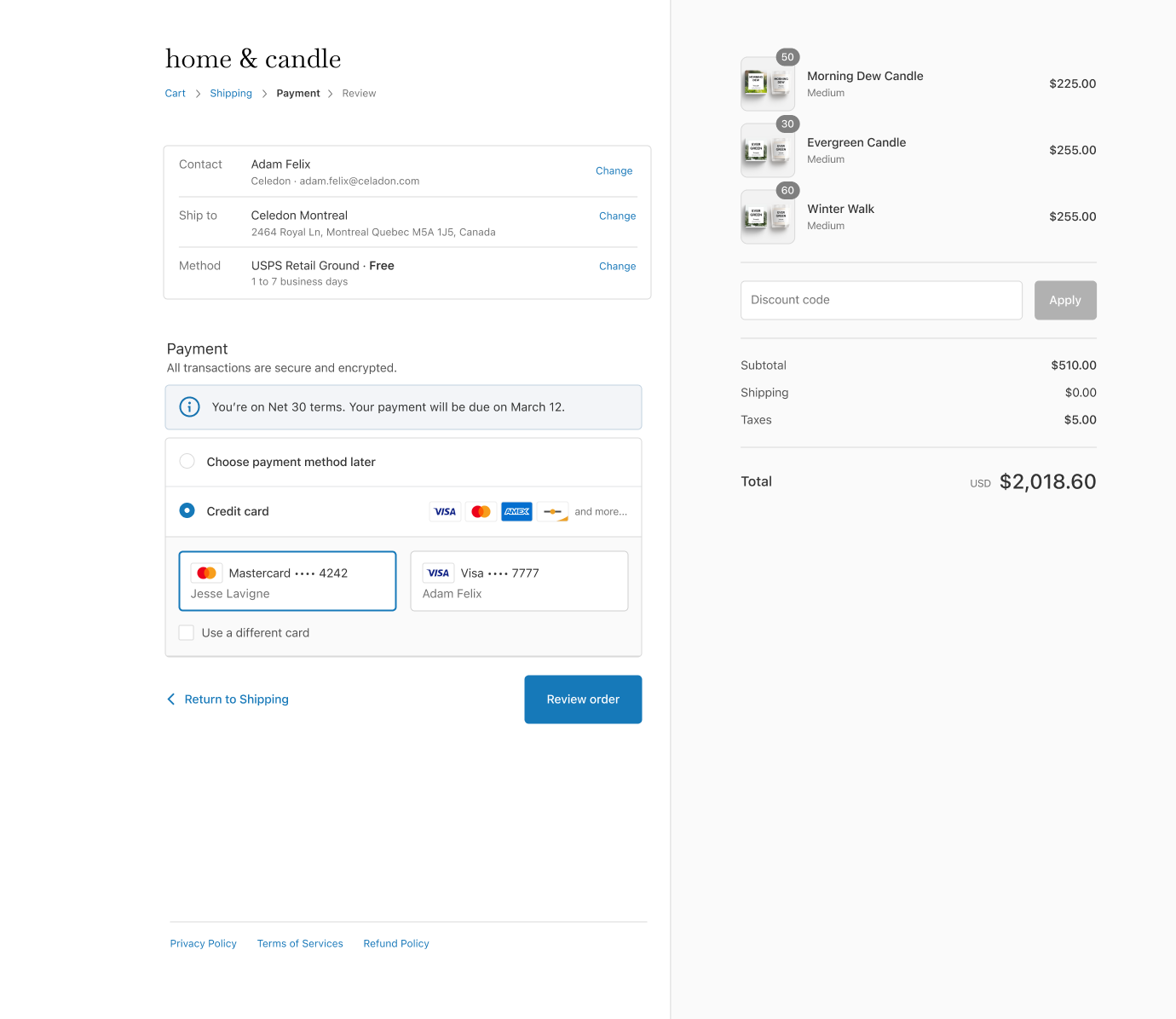
It’s not just merchants who benefit from automation, either. Buyers can use:
- Easy reordering.所有ow buyers to easily duplicate past orders, make edits, and checkout again with just a few clicks. Reordering capabilities streamline the order process for your customers and encourage repeat ordering.
- Editable account information.Gartner reportsthe average B2B buying decision involves 6 to 10 stakeholders. Speed up the internal buying process and make it easy for customers to manage their account by giving them access to all of their company information within their ecommerce site. Even set different permission levels for different customers, so only those with admin permissions can change key information.
- Payment reminders and “Pay Now” on past orders.Customers will never be out of the loop on when their payments are due. With payment reminders and the ability to pay down orders as their payments become due, customers can remain in good standing with the suppliers they work with and build better merchant relationships.
While you can automate the bulk of your sales and support interactions, use self-serve and automation as the first port of call with a trainedB2B sales teamas backup. It’ll filter out support tickets that don’t need a human touch, leaving your team with more time to build relationships instead of B2B processing orders.
Flexibility in payments and ordering
Payments differ dramatically between B2B and DTC orders. The latter is quick and simple; money is paid upfront before an individual customers’ order is fulfilled. Business buyers, on the other hand, have greater control over their purchase methods and options.
“我们正在通过Shopify B2B销售。所有of the payments go through our Shopify store. That allows us to keep track of our stock effectively, keep our accounting clean, and to have a seamless, electronic payment gateway for our B2B purchases.” —Dr. Justine Ward, co-founder and CMO of Thirdzy
Offer customers access to Shopify’sB2B Checkoutfeature and provide personalized checkout experiences. Buyers can:
- Request a quote online and track its progress within their self-serve account hub, using checkout to draft
- Authorize merchants to charge their credit card on file as payments become due—giving them one less thing to think about
- View negotiated payment terms andwholesale pricesfrom their online portal
- Customize shipping addresses if they’re purchasing inventory for various stores or warehouses, or placing a dropshipping order, if the merchant has enabled this feature on their account
- UseShopify Paymentsto process B2B payments in 130+ currencies, using the same backend already powering your DTC storefront
“We have several B2B clients that use our online gifting service to send gifts to prospects, vendors and partners,” says Alexandra Puccini, owner ofLavender and Pine Gifting. “It's the same experience a consumer would have sending a gift to a friend, inclusive of tracking information sent directly to them. It's easy, accessible, and automated.”
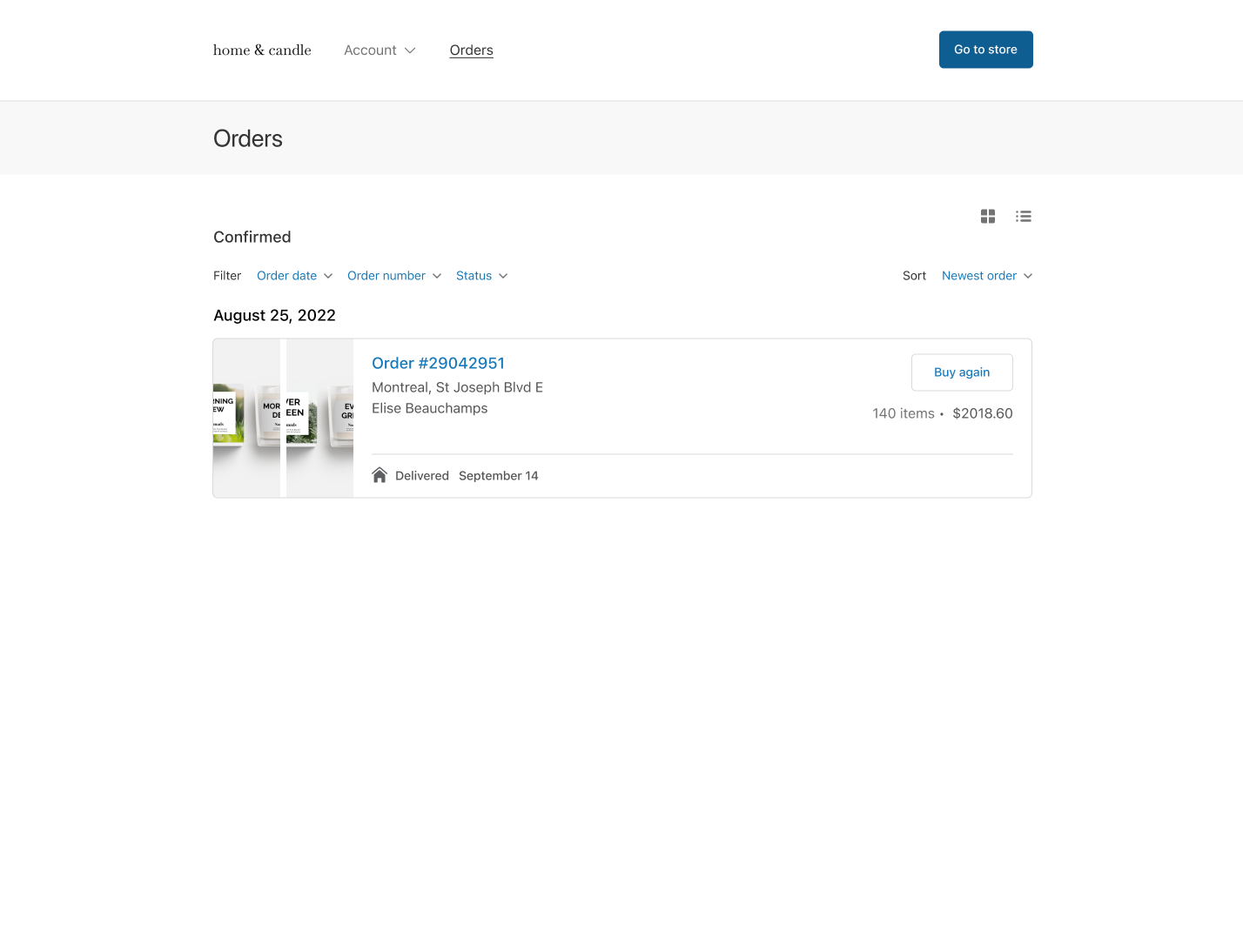
Give B2B the DTC treatment
Business customers are crying out for the same personalized, seamless shopping experiences they have when making personal purchases.
Use Shopify Plus to giveyour B2B storefrontthe DTC treatment, from self-serve and automation to payment flexibility, and reduce lead times. Buyers will get the information they need instantly—without draining resources from your sales team and increasing conversion rates.
B2B Shopify Brooklinen等所使用的品牌,Dermalogica, and True Botanicals to power both DTC and B2B operations. Are you next?
Read More
- B2B Ecommerce: Everything You Need to Know to Get Started
- B2B Ecommerce: Why Taking Your B2B Business Online is a Smart Strategy to Scale
- 12 B2B Ecommerce Trends To Shape Your Business in 2023
- What Is Wholesale B2B and How To Sell To Customers in 2023
- What Are B2B Payments? Methods & Processing Systems
- B2B Marketplaces: What They Are, How to Succeed, and 8 Marketplaces to Consider
- Find the perfect domain name
